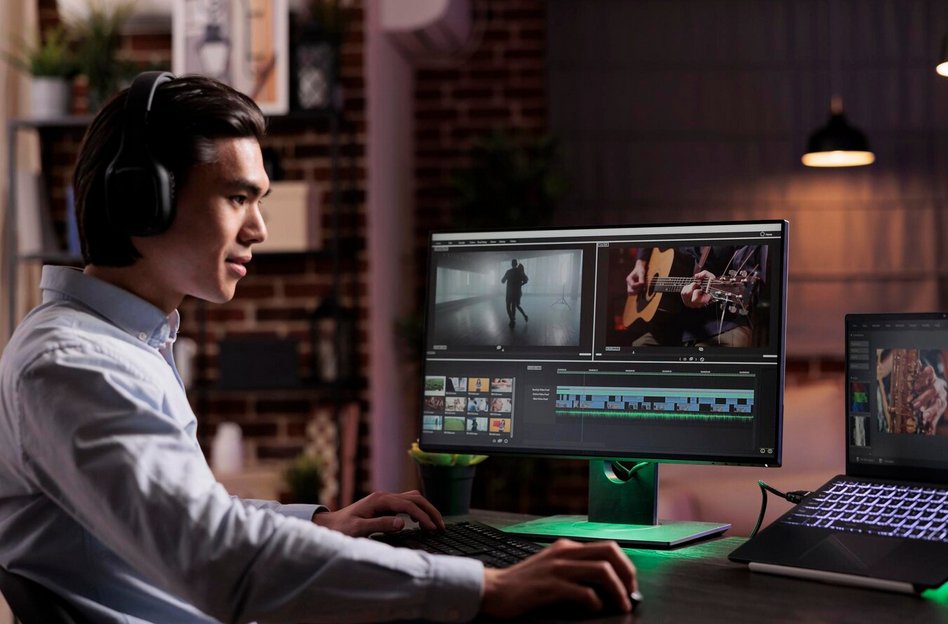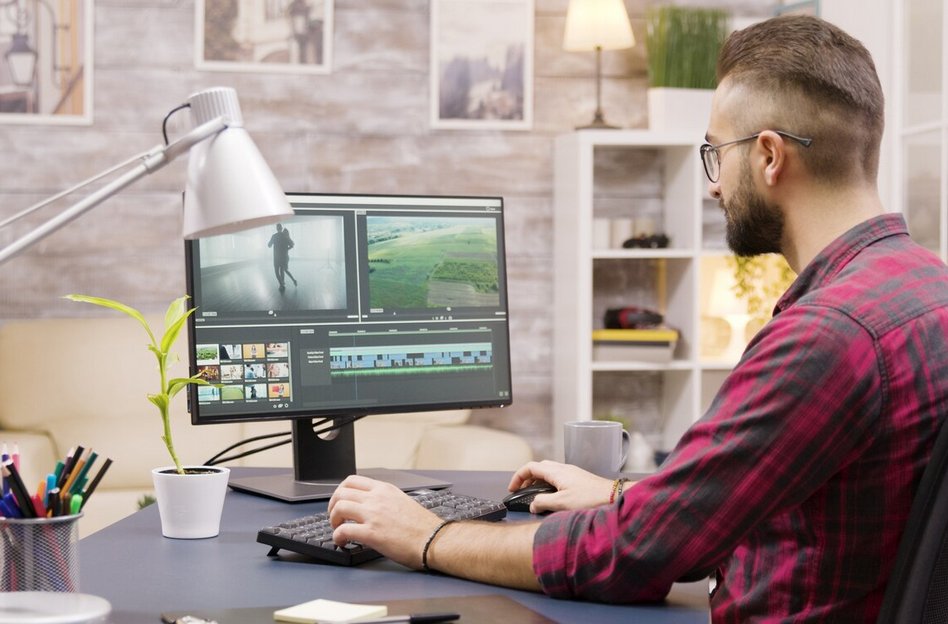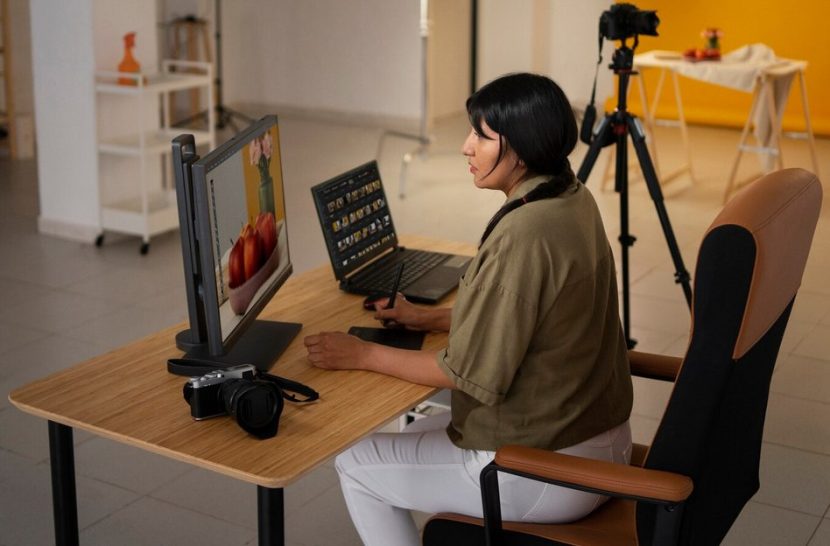There’s something special about the way creators interact with the world around them. Whether it’s remixing a song, splicing together a trailer to flip the tone on its head, or penning a heartfelt piece of fan fiction, that instinct to build upon existing stories is deeply human. It’s not copying for the sake of it, but reimagining. Breathing in something familiar and exhaling something fresh.
Fan content is everywhere. From reaction videos that capture gut-level responses, to intricate fan edits that reshape narratives, creators across YouTube, TikTok, Wattpad, and Instagram have formed thriving communities around their favourite media. It’s built on passion, not profit. It’s where imagination runs wild and niche corners of the internet feel like home.
But let’s be honest: there’s a big ol’ question mark hanging over this creative playground. Copyright. That awkward word that often feels like a full stop to inspiration. Who owns what? What can you use? Are you risking a takedown? Or worse?

We recently chatted with the folks at Podmore Legal https://podmorelegal.com/, a law firm with years of experience helping creatives across Western Australia and Victoria. One thing became clear early on: creators don’t want to break the rules. They just want to understand them. That’s where fair use steps in. It’s a legal doctrine that might sound like dry toast, but it’s actually the bread and butter of fan creativity when used wisely.
So let’s roll up our sleeves and dig into how fair use works, what makes content transformative, and how to keep creating with both flair and care.
Creative Examples & Impact
At the heart of fair use is transformation. That means taking something that exists and adding to it, shifting its meaning or purpose in a way that brings something new to the table.
Take mashups, for starters. You’ve probably seen music videos that mix Beyoncé with Nirvana, or trailers that turn comedies into horror flicks. These don’t just stitch clips together for laughs (though the laughs are solid) — they highlight contrasts, reveal subtext, or spin entire genres on their heads. The result is something that feels clever, unexpected, and wholly original.
Then there are reaction videos and commentary channels. You might watch someone break down a film scene with genuine insight, cracking jokes or offering a cultural perspective that shifts how you view the original piece. That added layer — whether it’s humour, critique, or education — can take the content from passive viewing to active engagement.
Reviews and critiques are another classic form. A well-crafted video essay dissecting the themes of a game or book doesn’t exist to rip it off, but to explore and analyse. This kind of commentary often relies on short clips or images, not to replicate the work, but to support a deeper argument.
Parodies and satire push this even further. Think of the endless Star Wars skits or musical parodies that twist well-known works into social commentary. Parody walks hand-in-hand with criticism — not of the thing itself, necessarily, but of the world it lives in.
And fan edits? These are a love letter and a creative remix all in one. Whether it’s re-cutting scenes to spotlight a side character or imagining an alternate ending, they offer new narrative takes and breathe life into familiar media in ways the original creators often never envisioned.
Of course, we can’t forget fan fiction, transformative art, and even cosplay videos that tell new stories through costume and setting. It’s not about mimicry. It’s about personal voice, reinterpretation, and building something meaningful.
This kind of transformation connects people. It fosters community, encourages skill development, and gives creators a way to join the conversation instead of just listening. It’s the difference between pressing “share” and saying, “Here’s what I see in this.” That spark of originality is what makes fair use not only possible, but powerful.

Understanding Fair Use
So let’s talk law. Or at least, the bits of law that affect your creative process.
Copyright protects original works of authorship fixed in a tangible form. That includes music, movies, books, games, artwork, even TikToks. The original creator usually owns the copyright (unless it’s created under a work-for-hire arrangement), and they’ve got the exclusive right to copy, distribute, perform, display, and make derivative works from it.
In general, using someone else’s copyrighted work without permission is a no-go. Unless, of course, you’re working within an exception. That’s where fair use steps in.
Fair use is part of the U.S. Copyright Act (Section 107) and acts as a legal defence — not a golden ticket. That means if you end up in court, you’ll be arguing that your use falls under fair use. Courts look at each case individually, weighing four key factors.
Purpose and Character of the Use
This one’s all about intent. Are you commenting on the work? Teaching something? Adding humour or critique? That’s more likely to qualify. The big word here is transformative. Did you change the original to serve a new purpose or message?
Commercial use doesn’t automatically disqualify you. Sure, courts give a little more leeway to non-profit or educational content, but if you’re creating something that transforms the source significantly, even monetised videos can fall under fair use. Think of parody channels or video essays that get revenue but still offer substantial original content.
Nature of the Copyrighted Work
Creative works like novels, music, and films get more protection than factual or non-fiction material. Courts are more hesitant to allow fair use of purely imaginative content — say, a sci-fi screenplay — than they are of something like a news report or scientific paper.
Also, if the work hasn’t been published yet, the creator has more control, and fair use becomes harder to argue. Basically, if you’re using an unpublished novel draft that leaked online, don’t.
Amount and Substantiality
This factor looks at how much of the original work you used and what parts. If you only used a few seconds of a song to make a point in a video essay, that’s very different from uploading the entire track. But it’s not just about time or word count — using the most memorable or essential part (like a song’s chorus or a pivotal movie scene) could weigh against fair use, even if it’s short.
Context matters. If the bit you used is critical for your commentary or critique, courts may still consider it fair.
Effect on the Market
This one’s often considered the most important. If your creation replaces the original or hurts its market — like offering a full film with your own voiceover as a “free version” — that’s a red flag.
But if your content serves a totally different purpose and audience, or clearly doesn’t compete with the original (like a comedy parody or critical review), then this factor might support fair use.
Not a Free Pass
Fair use might protect you in court, but it doesn’t stop copyright holders from taking action before things get there. Platforms like YouTube have systems like Content ID that flag and demonetise or remove content automatically. Even if your work qualifies as fair use, you might need to dispute a claim or appeal a takedown — which can be a slow and frustrating process.
That’s why understanding the principles is so important. It helps you build stronger, more defensible content right from the start.
Best Practices & Pitfalls for Creators
If you want to stay on the safe side of fair use, transformation is your best friend. Add commentary, critique, humour, or analysis. Use only what you need to make your point — not a frame more. Make your own voice the loudest part of the content.
While not legally required, citing your sources and acknowledging the original creator shows good faith. It won’t stop a takedown notice, but it shows you’re acting responsibly, not pretending the material is your own.
A quick note about disclaimers — some creators include a line like “This content is intended for educational or commentary purposes under fair use.” It’s not a legal shield, but it can help frame your intent.
Now, a few common traps to avoid. Giving credit doesn’t equal permission. Just because it’s non-profit doesn’t mean it’s automatically protected. There’s no magic number of seconds or words that makes something fair use. And the fact that “everyone’s doing it” won’t help you if you get flagged.
If you do get hit with a takedown or legal threat, things can escalate fast. You might lose monetisation, get channel strikes, or worse. So if you’re ever unsure, don’t be afraid to explore alternatives.
There are plenty of licensing services for music, footage, and images. You can also dig into Creative Commons content or dip into the public domain. Or take the long road: make something entirely original from the ground up. It’s slower, sure, but there’s real pride in it.
And if you’re working on something more complex or high-stakes, it might be worth having a proper legal chat. Podmore Legal mentioned that even short consultations can help avoid messy situations later on.
Keep Creating with Confidence
Fair use might seem like a tangle of rules and risks, but at its core, it’s about balance. It protects your ability to speak, to reinterpret, to critique and remix — without shutting down the rights of the original creator.
So go ahead: be bold, be clever, be thoughtful. Whether you’re editing a tribute video or reviewing a classic film, make it your own. Respect the creators whose work inspires you, but don’t be afraid to step into the conversation with your own perspective.
The best content doesn’t copy. It contributes. And when you do that with intention and understanding, you’re not just playing it safe — you’re creating something worth sharing.
Now, over to you. Got a tricky copyright situation? Ever had a video flagged unfairly? Let’s talk.
